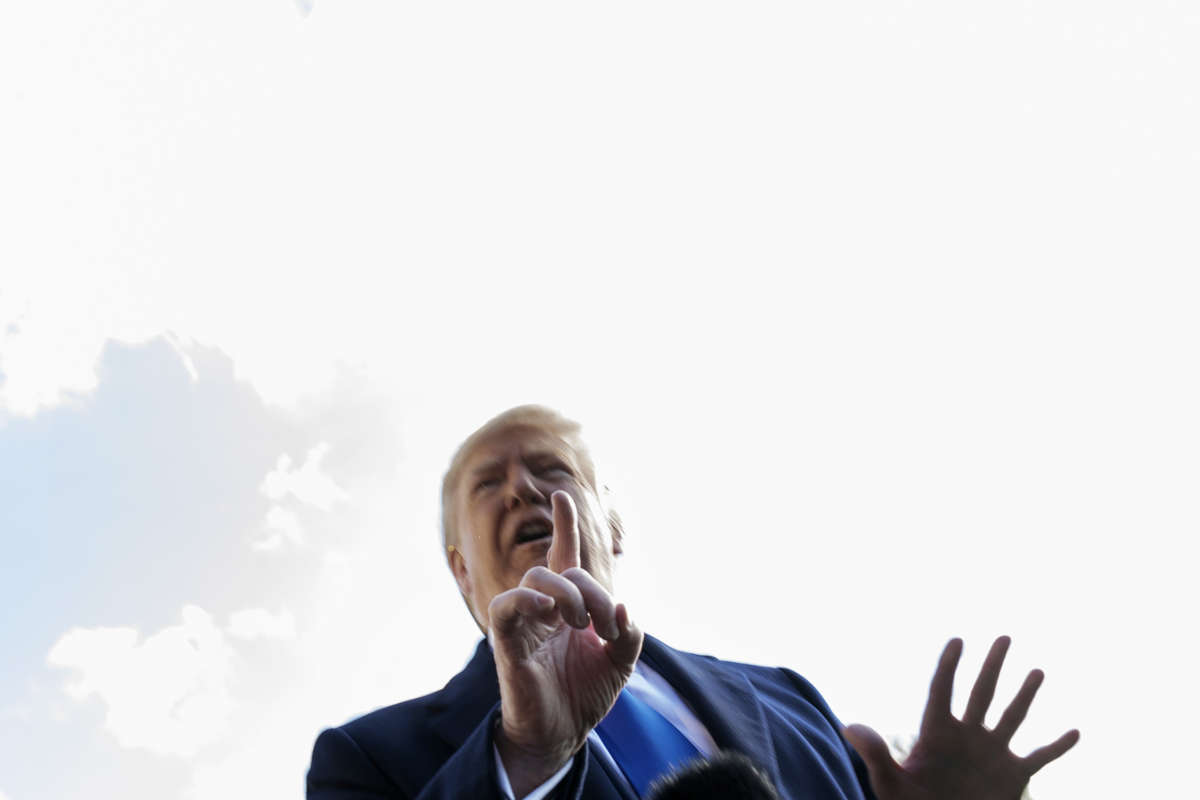The Trump campaign categorized millions of Black Americans as individuals to be actively discouraged from voting in the 2016 presidential race, according to a report from the British television network Channel 4.
According to details published on Monday, Channel 4 obtained the huge cache of data used by the Trump campaign working with the now-defunct data firm Cambridge Analytica to categorize Americans, oftentimes based on race, in order to target them in with political ads on social media.
Nearly 200 million Americans were profiled into one of eight categories called “audiences” in the data collected by the Trump campaign and Cambridge Analytica using specialized algorithms. One of those audiences was titled “Deterrence” and referred to a group of voters that the campaign sought to discourage from taking part in the 2016 presidential election between Donald Trump and Hillary Clinton.
Individuals who were listed as being Black, Asian, Hispanic or “Other” made up 54 percent of the “Deterrence” label, according to the Channel 4 report. More than 3.5 million Black voters were part of that category.
The information was used to target advertising on Facebook in 16 battleground states in 2016. Notably, a number of those states saw their voter participation rates drop significantly among Black residents, including in Wisconsin, where one in five Black voters who took part in the 2012 election did not vote in 2016.
Trump ended up winning Wisconsin by just over 22,000 votes, or 0.76 percent of the total vote share.
Based on population statistics, Black voters were disproportionately placed in the “Deterrence” category set up by the Trump campaign. In Georgia, for instance, although Black residents make up about 32 percent of that state’s population, they accounted for 61 percent of the voter profiles in the “Deterrence” category.
In many instances, the Trump campaign used targeted advertisements that sought to dissuade Black voters from turning out. One ad featured a Black woman who pretended to abandon a script midway through the video, saying she’s “not that good” of an actor as to be able to speak in support of the Democratic Party’s presidential nominee.
It’s been estimated that, across the country as a whole, around 2 million Black voters who took part in voting for former President Barack Obama in 2012 did not participate in 2016. It remains to be determined to what extent this widespread deterrence campaign was responsible for that decrease in voter participation.
In speaking to Channel 4, many civil rights groups described the efforts by the Trump campaign to deter voting as another form of voter “suppression.” They have also called upon Facebook to make greater disclosures over how campaigns use targeted information, in light of these new details.
Jamal Watkins, vice president of civic engagement for the NAACP, decried the actions that were taken by the Trump campaign in 2016.
“We use data — similar to voter file data — but it’s to motivate, persuade and encourage folks to participate,” Watkins said. “We don’t use the data to say who can we deter and keep at home. That just seems, fundamentally, it’s a shift from the notion of democracy.”
We’re not backing down in the face of Trump’s threats.
As Donald Trump is inaugurated a second time, independent media organizations are faced with urgent mandates: Tell the truth more loudly than ever before. Do that work even as our standard modes of distribution (such as social media platforms) are being manipulated and curtailed by forces of fascist repression and ruthless capitalism. Do that work even as journalism and journalists face targeted attacks, including from the government itself. And do that work in community, never forgetting that we’re not shouting into a faceless void – we’re reaching out to real people amid a life-threatening political climate.
Our task is formidable, and it requires us to ground ourselves in our principles, remind ourselves of our utility, dig in and commit.
As a dizzying number of corporate news organizations – either through need or greed – rush to implement new ways to further monetize their content, and others acquiesce to Trump’s wishes, now is a time for movement media-makers to double down on community-first models.
At Truthout, we are reaffirming our commitments on this front: We won’t run ads or have a paywall because we believe that everyone should have access to information, and that access should exist without barriers and free of distractions from craven corporate interests. We recognize the implications for democracy when information-seekers click a link only to find the article trapped behind a paywall or buried on a page with dozens of invasive ads. The laws of capitalism dictate an unending increase in monetization, and much of the media simply follows those laws. Truthout and many of our peers are dedicating ourselves to following other paths – a commitment which feels vital in a moment when corporations are evermore overtly embedded in government.
Over 80 percent of Truthout‘s funding comes from small individual donations from our community of readers, and the remaining 20 percent comes from a handful of social justice-oriented foundations. Over a third of our total budget is supported by recurring monthly donors, many of whom give because they want to help us keep Truthout barrier-free for everyone.
You can help by giving today. Whether you can make a small monthly donation or a larger gift, Truthout only works with your support.
